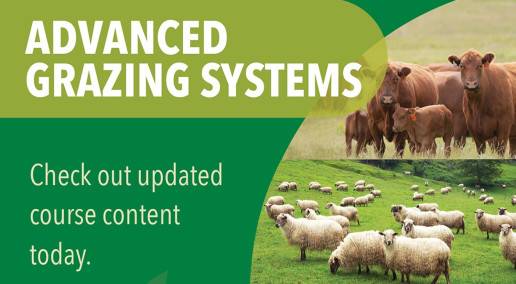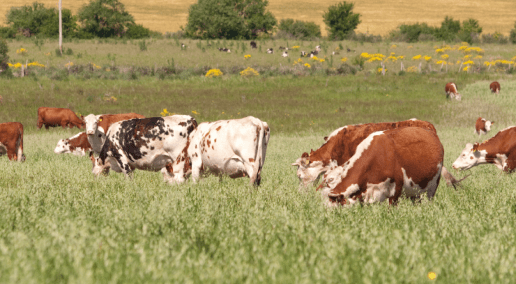.png) Stephen Smith (top right) and his family. (photo courtesy of Stephen Smith)
Stephen Smith (top right) and his family. (photo courtesy of Stephen Smith)
The Canadian Forage and Grassland Association (CFGA) is pleased to share this guest blog from its valued annual partner, ALUS, as they highlight the sustainable farming and enhanced grazing techniques being done on Speedwell Farms.
Family Farming and Enhanced Grazing in the Foothills of Alberta
Stephen Smith and his wife Helena run Speedwell Farms in the valley of Ghost Pine Creek in Red Deer County, Alberta. Stephen is a third-generation rancher and has been involved with ALUS as a participant, a member of the Partnership Advisory Committee (PAC) and a farmer liaison. His first ALUS project was a restored wetland. Today, he is actively contributing to ALUS’ Grazing Forward program by practicing adaptative multi-paddock (AMP) grazing.
When Stephen took over the farm, he attempted to grow grain, but eventually transitioned to cattle ranching with a small annual crop rotated in. Today, his herd counts approximately 200 head, and the total farm size is 1,700 acres, which includes 500 acres of annual crops.
Stephen and Helena have been exploring wetland conservation since they first began working with Red Deer County’s Off the Creek program in the early 2010s. A few years later, in 2015, the ALUS program launched in the region. With the expertise provided by ALUS, they could identify the marginal areas on Speedwell Farms and initiate their first ALUS project: the creation of a wetland.
A grazing plan can be simple on flat, even ground. But Stephen’s farm has a unique topography. His grazing project required a complex design of crossed-fenced pastures to decrease the time cattle are present on the parcel and increase the rest the parcel gets from grazing. Additionally, this fencing protects woodlands, boggy ground and knolls with high erosion risk. In some cases, tame grass is also separated from native grass.
Using his pressurized alternative watering system, Stephen can now pump water to paddocks beyond the wetland, improving soil health and plant biodiversity across the pastures. Extra fencing can also be added to separate grass species, shorten grazing time, lengthen rest time and increase the volume of litter and grass left for ecological services. With more grass and litter, farmers help preserve biodiversity, filter water and sequester carbon and nutrients in the soil. These interventions were uniquely designed based on Stephen’s relationship with the land and his intergenerational knowledge of the landscape. The adaptive strategy used here both raises overall productivity and maximizes the amount of carbon captured.
“ALUS helped make it possible to execute the first step of protecting the sensitive areas,” says Stephen. “Now, with Grazing Forward, we have the ability to pump water from the lake up 150 feet of a steep hill to the paddocks. This allows further fragmentation of paddocks, keeping nutrients up on the range away from wetlands, therefore producing even more ecosystem services (including carbon capture).”
With these projects completed and the new infrastructure in place, Stephen can focus on the flow of cattle through the system, timing of grazing, weather adjustments and maintenance of the fence and the alternative watering system. In many ways, Stephen has honoured the arduous work of the generations before him by producing vital ecosystem services for the surrounding communities and ensuring the farm will be able to sustain generations to come.
Learn more about ALUS Red Deer County.
Back to May 2024



Leave a Comment